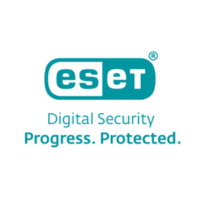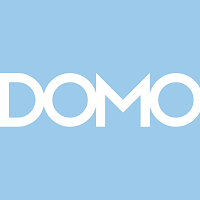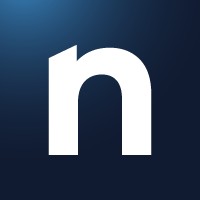Good data used in a business is vital for producing expected results for effective decision-making. It is essential to know that data is good before it moves through different business processes and functions. Data lineage aims to track how the data changes as it moves through an organization.
What is Data Lineage?
Data lineage is the process of tracking how data moves through an organization. Data lineage tracks the origin, movement, transformations, and final destination of data within an organization, providing a clear record of how and why it changes along the way.
Why is data lineage important for businesses?
Data lineage helps businesses meet data governance policies and comply with regulations. Data quality and integrity are better maintained when data lineage is involved as a routine process. By continually using data lineage, the data will be accurate and consistent for decision-making, and the validity and reliability of the data ensure the data analytic processes will generate valid results that reflect the company’s position, allowing for relevant decision-making that positively impacts the organization.
Data lineage reduces risk in storing data and can be used to troubleshoot data issues faster. Data lineage can execute impact analysis scenarios to determine the best or worst outcomes. Overall, data lineage builds trust in an organization’s data and helps the organization understand the data better.
How does data lineage work?
Data lineage begins with identifying the data source, such as a database, file, data warehouse, or data lake. Data lineage traces data from its source to its targeted destination, capturing any changes made along the way. The process involves a visual map showing how data moves through an organizational system. The map outlines the data’s origin point, transformations, and final stored location. As data changes through its lifecycle, data lineage tracks those changes.
Types of data lineage
Data lineage is determined by its function in data governance. The common types of data lineage are business, technical, design, and backward data lineage.
Business lineage
Business lineage data is any information that tracks data flow through a business process or function. Business lineage data focuses on how data is used in a business and the decisions made from using the data. This category of lineage data describes the origin and evolution of the data, including its business relevance and how it impacts business decisions.
Technical lineage
Technical lineage, also called horizontal data lineage, focuses on the technical level of data flow. The lineage starts from the raw data sources and details every technical step as data moves through a business’s IT environment, including hardware, software, networks, and data management systems supporting business operations.
Design lineage
Design lineage captures the intended data flows and transformations during the design phase, documenting the logical mapping of data elements and conversions for data integration or Extract, Transform, and Load (ETL) processes.
Backward data lineage
The backward data lineage is used for troubleshooting and root cause analysis. The data it tracks begins at the destination or targeted source and goes backward to the original source.
Vertical lineage
Vertical lineage is not as popular as the other four types. Still, it involves drilling down into transformations and processes at a column-level lineage and provides granular details into how data elements are derived, totaled, or calculated.
Data lineage use cases
Data lineage is used across many different business industries. Data lineage is a vital part of data governance, as it helps companies maintain data quality and compliance standards. It also provides a historical map of data element transformations.
Data quality management
A structured data lineage framework allows a business to backtrack to the original data source when an issue or error is identified. Tracing an erroneous data element back through a process or database is vital in correcting the data element and, more importantly, making the necessary corrections to prevent further issues.
Risk mitigation
Risks can show up in data in many forms. Knowing the data’s specific path is essential for assessing and correcting the issue. A risk can be operational, such as a data breach or network outage that disrupts database access. Data lineage shows a view of your data and the transformations that happened. Data lineage ensures integrity and security are maintained through the entire data governance framework.
Regulatory compliance
A granular level of tracking data is critical to ensure regulatory compliance. Europe’s General Data Protection Regulation (GDPR) and California’s California Consumer Privacy Act laws safeguard the data and privacy of a nation’s or state’s residents. Data lineage allows you to track the complete lifecycle of data, from its origin to where it moves, who touches it, and how the data has changed. Data lineage maps provide transparency, making it easier to comply with regulatory compliance laws.
Business Intelligence (BI) tools and optimization
Business intelligence tools are exceptional at extracting meaningful data from raw data and turning it into actionable insights that a business can use. However, insufficient or erroneous data in the pipeline that ends up in a targeted source used for decision-making can lead to misguided decisions. Data lineage helps prevent faulty data from being stored by visually representing how data is collected, transformed, and stored throughout its lifecycle.
The visual diagram allows a user to identify and correct errors at the source by tracing the data’s journey and pinpointing where the error occurred. Using the data lineage visual diagram helps users diagnose and correct problems quickly, ensuring the data is reliable and accurate for decision-making.
Data security
Data security includes more than encryption and firewalls. From a security perspective, data lineage can map how data moves and transforms across the organization. A data lineage map used by cybersecurity staff can identify vulnerabilities or unauthorized access points, such as sensitive business data stored in an unsecured location during a transformation process.
A data lineage map used by cybersecurity staff can strengthen access controls or implement data masking at specific points during the transformation process. A data lineage map helps strengthen an organization’s security strategy and posture.
Improving data operations efficiencies
A data lineage map can help businesses streamline data operations by understanding how the data moves through an organization. A map can identify redundant processes where data is stored or processed multiple times in different systems or locations within an organization. This might include the same customer data stored in two places, like shipping and sales tables when it only needs to be saved in one table. A well-documented data lineage map can identify these redundancies and improve overall data operations.
Does your team need data lineage?
Data lineage is essential to data governance and for a business’s continued success. Data lineage helps to track changes and find the root cause of data quality issues. Businesses can better monitor the changes as data moves through the pipeline and pinpoint when the data changes before it reaches its final target source or location. Data lineage is a necessary function for any business that requires accuracy, integrity, consistency, uniqueness, and relevancy. Therefore, every business concerned about data quality must ensure that the teams responsible for data quality use data lineage tools to manage data moving within an organization.
Popular data lineage tools
The popularity of a data lineage tool indicates that those using the tool are satisfied with the results, but these businesses may not address your specific needs. Popularity only means the tools work as advertised, making popularity a good starting point. The best data lineage tools provide:
- Column and field-level lineage
- Extensive data import capabilities
- Active metadata support
- Upstream (i.e., receiving materials to make a product) and downstream (i.e., involves order management, warehousing, and transportation for timely delivery) functionality
Listed here are some popular data lineage tools:
Collibra

Collibra provides automated data relationship mapping and detailed visual diagrams of data lineage.
Atlan

Atlan can proactively alert users about data quality issues, help users intuitively find data, and use automation to generate documentation.
Datameer

Datameer is a data transformation platform that collects, prepares, and transforms data using data governance principles to store encrypted sensitive data and keep track of data changes.
Featured Partner
A featured partner of an application is a different application that enhances or expands its functionality, such as adding features to data lineage software.
Snowflake

Snowflake helps data lineage tools by using Snowflake Horizon, which automatically captures and visually displays data lineage diagrams. Snowflake Horizon can integrate with third-party catalogs and governance tools.
Google Cloud

Google Cloud helps data lineage applications by providing tools like Dataplex that allow a business to track data movement within your organization. Dataplex lets a company view lineage information in a graph visualization from the Google Cloud console. Google’s cloud data fusion feature allows businesses to use data lineage to discover the root cause of corrupted data and perform impact analysis before making changes.
Frequently Asked Questions (FAQ)
Data lineage is more concerned about the data’s complete journey from its source to its final targeted source, including the changes the data undergoes. In contrast, data mapping focuses on how data fields from one data source are connected to a corresponding field from a different data source. Data lineage captures a historical view of data flow, while data mapping involves the current relationships between data fields during transfer or integration.
Table-level lineage is the most common form of data lineage. Table-level lineage provides a high-level overview of data flows without detailing the specific data within each table. It focuses on how tables are connected but does not provide granular information about data transformations or the particular data points in a table.
Specialized software tools can automatically track data flow and capture metadata at each step. Users can also use manual processes to document the flow of data.
- Data mapping can capture the relationships and dependencies between data sources.
- Google Cloud Dataplex can use the Data Lineage API tools to manually record lineage information for data sources not supported by the integrated system.
- Data validation can verify the accuracy and integrity of the data lineage framework by auditing and using a verification process.
Data lineage faces many challenges that can corrupt data. Listed are some of the challenges businesses need to be concerned about:
- Lack of standards: Different standards across different systems create inconsistencies, making it challenging to integrate lineage information.
- Lack of standardized tools: Without standardized tools and methodologies for documenting data lifecycles, the lineage information will be suspect and problematic when verifying good and reliable information.
- Frequently changing data: Constantly changing data makes it difficult to track data lineage.
- Large amounts of data: Processing large amounts of data may be challenging for some data lineage tools not designed to process data in bulk.
- Voluminous unstructured data: This is challenging to process and trace due to its size, limited tools support, and complex transformations that can create privacy issues.
- Integration with other systems: Integrating a data lineage system into another business system poses data quality issues and concerns.
- Different data environments: Data environments containing multiple data sources and endpoints in modern environments make it challenging to map and visualize data lineage.
A data lineage diagram is a visual representation showing how data moves through a business that starts from its origin to its final targeted source.





